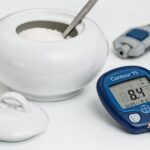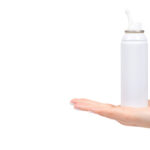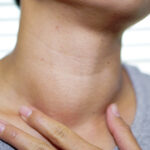Wednesday, February 22, 2023
Many adults suffer from varicose veins, especially varicose veins, which is a condition that causes discomfort due to its effect on the appearance of the legs. In this article, learn about the symptoms and causes of varicose veins and how to treat them.
What are varicose veins?
Varicose veins occur when blood vessels bulge and twist directly under the surface of the skin. These bulges often appear blue or violet in color, and spider veins, which may surround varicose veins, may appear in the form of small red or purple lines, usually gathered in the legs or The feet or ankles are near the surface of the skin.
Although varicose veins may look unsightly or uncomfortable, for most people they are not dangerous. However, in some cases severe varicose veins can lead to serious health problems, including blood clots. Most symptoms of varicose veins in the legs can be relieved using several home and medical treatments.
Symptoms of varicose veins
Varicose veins may not cause any pain. Its symptoms include:
Visible veins that are bulging, twisted, or distended
Twisted and swollen veins are blue or purple in color and appear just below the surface of the skin, most often in the legs or ankles and feet. It can also develop in other parts of the body, such as the esophagus, rectum….
Pain, heaviness, or pain in the legs
Varicose veins result in heaviness and fatigue in the muscles of the legs or inactivity, especially after physical activity, and pain or muscle cramps in the leg, especially behind the knee.
Swelling, itching, and skin changes
In cases where varicose veins are left untreated, they can cause skin changes including brown discoloration on the skin. Severe varicose veins can cause venous ulcers to appear on the surface of the skin.
How do I know that I have varicose veins?
Varicose veins usually appear under the surface of the skin and are easy to see, especially when the person is in a standing position. The latter may be accompanied by swelling or heaviness in the legs, especially at night or after exercise.
Causes of varicose veins
Anyone of any age can develop varicose veins, but some factors increase the chance of infection, including the following:
1. Genetic causes
Varicose veins can be caused by a genetic condition, and the risk of developing varicose veins increases if someone in your family has the condition. This suggests that varicose veins may be caused in part by your genes (the units of genetic material a person inherits from their parents).
2. Age and hormonal changes
Prepare Women are more likely to get varicose veins than menas female hormones can allow the walls of veins to stretch, especially when taking birth control pills or in women in menopause, due to hormonal changes.
3. Lifestyle factors
Standing or sitting for long periods contributes to reducing blood circulation, and wearing tight clothes, such as corsets or pants with tight belts, can reduce blood flow, in addition to some health conditions, including obesity, that lead to varicose veins.
4. Age
With age, the veins begin to lose their elasticity and the valves inside them also stop working, which can cause varicose veins.
5. Obesity
Overweight and obesity can make vein walls and valves weak due to the extra pressure on the veins, causing them to widen.
6. Pregnancy
Increased hormone levels during pregnancy cause the muscular walls of blood vessels to relax, which increases the risk of developing varicose veins. Varicose veins may also develop in cases where the fetus begins to grow. Although pregnancy can increase the risk of developing varicose veins, most Women find that their varicose veins improve significantly after giving birth.
7. Medical conditions that increase the risk of developing varicose veins
Certain health conditions, such as severe constipation or certain tumors, can increase pressure in the veins.
diagnosis varicose veins
Varicose veins are easy to see as they are close to the surface of the skin. The condition can be diagnosed during a physical examination
By examining the legs while standing to check for signs of a tumor, or the possibility of any pain when touching the place affected by varicose veins, it is also possible to see detailed pictures of the veins and check for complications, by conducting ultrasound examinations, this safe test is used to produce images of tissues inside the body, and monitor how the valves work Check for the possibility of blood clots.
Varicose veins treatment
Most varicose veins do not require any treatment, but if treatment is necessary, it includes the following methods:
Sclerotherapy
During sclerotherapy, a solution is injected into a vein. This solution causes the walls of the vein to stick together, turning the vein into tissue that fades away.
compression stockings
Compression stockings put pressure on the legs to help the veins and leg muscles move the blood well. These compression stockings are available at most pharmacies and medical supply stores. Compression stockings should be replaced every so often Three to six months. If damaged, it is important to put them on as soon as you get up in the morning and take them off when you go to sleep.
Raising the legs
If a person suffers from mild to moderate varicose veins, your specialist doctor may advise you to elevate your feet 3 or 4 times a day for 15 minutes. If you need to sit or stand for a long period of time, bending the legs from time to time can help maintain the cycle. bloody.
Laser therapy
This type of treatment is based on sending strong light rays into the affected vein, which leads to the vein slowly fading and disappearing. Without any surgical intervention.
Radiofrequency ablation
This procedure is preferred for the treatment of large varicose veins, where the specialist doctor inserts a thin tube into the enlarged vein, and heats one end of this tube using radiofrequency or laser energy, so the heat destroys the veins when the tube is removed, causing them to shrink and close tightly.
Surgical treatment
The surgery depends mainly on a procedure called ligation and stripping, where the affected vein is tied to prevent blood pooling, and the doctor removes the vein to prevent the appearance of varicose veins again.
Prevention of varicose veins
Varicose veins can be prevented by following the following measures:
- Avoid standing or sitting for long periods of time and try to move every 30 minutes
- Exercising regularly to improve circulation and help maintain a healthy weight
- Wear appropriate clothing to keep blood flowing well
- Avoid tobacco products
Frequently asked questions that may interest you
When are varicose veins dangerous?
Varicose veins are distinguished by their disturbing appearance, but most of the latter are not considered dangerous, except in some cases that worsen if left untreated, and lead to preventing proper blood circulation, which causes blood clots and deep vein thrombosis that occur within the dilated veins, causing a condition It is called superficial venous thrombosis or superficial thrombophlebitis (inflammation of a vein near the surface of the skin).
In some cases, veins close to the surface of the skin may burst. They cause minor bleeding, although this bleeding usually causes nothing but harm, but requires medical attention.
Painful sores can also form on the skin near the varicose veins, especially in the area near the ankles.
How do I get rid of varicose veins naturally?
Natural treatments include following a balanced lifestyle, including:
1. Maintain physical activity
Physical exercises such as swimming or yoga, walking and cycling help to exercise the calf without strain, which improves circulation and better blood flow.
2. Maintain a healthy weight
Excess weight and obesity affect the veins. Excess weight puts extra pressure on the veins, which means they have to work harder to get blood back to the heart, which can put pressure on the valves.
3. Eat foods that contain fiber and potassium
Constipation may lead to an increase in strong abdominal pressure to expel the stool, which may exacerbate damage to the venous valves. In this case, it is important to eat foods that contain fiber, such as whole grains and nuts, and foods that contain potassium such as oranges, pistachios, and leafy greens. Yogurt.., as potassium can help decrease water retention and increase blood in the body.
3. Avoid tight clothes
Tight clothes prevent blood flow. It is important to wear loose clothes that help blood reach the lower parts of the body. It is also necessary to wear flat shoes and avoid high-heeled shoes.
4. Herbal treatment
Dietary supplements containing grape seed extract help reduce swelling, relieve symptoms of varicose veins, and chronic venous insufficiency. In cases where a person takes blood-thinning medications, grape seeds should be avoided to avoid any interactions.
Also read: Learn about the symptoms of varicocele and when is the surgery?











